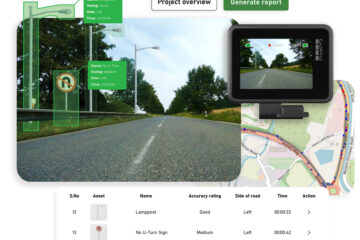We are pleased to announce that our company is leading a significant research initiative titled “High Performance Road Lane Inspection for Safer Cycling” (Project Reference 10017009), funded by Innovate UK with a grant of £140,961.
Project Overview
The project addresses the challenge of inspecting the UK’s extensive network of cycle-permissible lanes, approximately 515,600 lane-miles.
Inspecting cycleways and kerb lanes today is largely manual, slow and prone to inconsistency. This research will develop an automated system combining cameras, sensors, AI and software to:
- Detect and measure defects such as cracks, depressions, potholes and ponding.
- Deliver condition assessments up to 10 times faster and at around 10 % of the cost compared to current survey methods.
- Replace expensive laser-scanning equipment in paved surfaces dedicated to cycling infrastructure.
- The innovation emphasises detection of hazards unique to cyclists, for instance, potholes that become obscured by water pooling, which present significant risk of injury.
Funding & Timeline
- Funded value: £140,961.
- Funding period: February 2022 to January 2023.
- Lead participant: Our company (Strada Imaging Ltd).
- Key collaborator: Aston University — contributing characterisation of captured data (cracks, ponding, etc).
Why This Matters
Cycling is increasingly recognised as a sustainable, healthy transport mode and a vital part of urban mobility strategies. The UK government has invested significantly in active travel infrastructure. Yet, surveys show 67% of UK adults view roads as too dangerous for cycling.
gtr.ukri.org
By enabling faster, more accurate and cost-effective inspections of cycleable lanes, the project supports safer cycling environments, more informed maintenance prioritisation, and broader adoption of active travel.
Next Steps
- Finalise system development and validation of the imaging + sensor + AI workflow.
- Pilot deployment in cycleway/kerb-lane contexts to demonstrate real-world performance.
- Integrate produced data outputs with maintenance planning systems to enable actionable insights.


